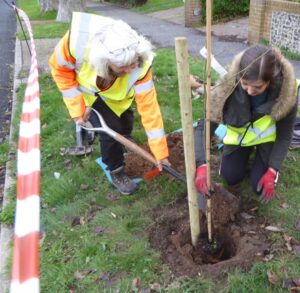 FUNDING from the national Local Authority Treescapes Fund will see more trees planted in Seaford.
FUNDING from the national Local Authority Treescapes Fund will see more trees planted in Seaford.
A number of streets in the seaside town will be transformed over the next few years thanks to over £299,000 of Forestry Commission funding.
The successful bid by East Sussex County Council will pay for the removal of a number of tree stumps and the planting of new trees across the town.
Over 150 new trees will be planted by the end of February 2022, and the grant includes three years of follow up maintenance to ensure the saplings are successfully established.
Cllr Claire Dowling, lead member for Transport and the Environment at East Sussex County Council, said: “We are delighted to have received this funding from the Forestry Commission.
“The Victorians had the vision to plant bold avenues of trees in urban areas that could be appreciated at maturity many years later. Unfortunately, almost 400 mature elms have had to be felled in Seaford since 2017 due to old age and Dutch Elm Disease.
“This funding gives us the opportunity to address some of this loss and to create new street tree features across the town for future generations to enjoy.”
The grant also includes a contribution of £2,000 for the local community group Trees for Seaford to help them purchase 90 trees to be planted this season.
Trees for Seaford, part of the Tree Wardens Network, has been working in Seaford for over 10 years and has planted approximately 500 trees in the town’s streets, schools and parks.
Margery Diamand, from Trees for Seaford, said: “Trees for Seaford is delighted to hear about the success of the bid. This is a huge credit to the people of Seaford, who have supported our voluntary group for over 10 years.
“We’re very excited that so many new trees will be planted in Seaford this autumn and we look forward to planting many more in the future.”
The Local Authority Treescapes Fund funds Local Authority-led tree planting and natural colonisation of trees outside woods, establishing more trees in hedgerows, parklands, urban areas, beside riverbanks, roads and footpaths, in copses and shelterbelts.


